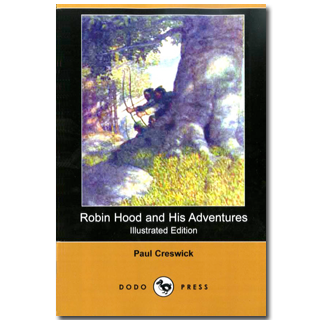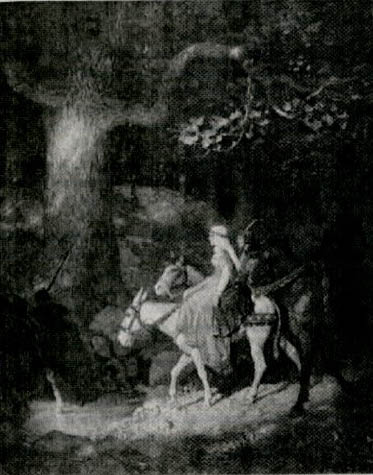
A FEW OTHER EVENTS FOR
OCTOBER 22:
- Happy Birthday to Florence Friedman Minor (If You Were a Penguin). In 1836, Sam Houston becomes president of the Republic of Texas. Read Make Way for Sam Houston by Jean Fritz, illustrated by Elise Primavera and Armadillo Rodeo by Jan Brett.
- The Metropolitan Opera House opens in New York City on this day in 1883. Read The Dog Who Sang at the Opera by Marshall Izen and Jim West, illustrated by Erika Oller, and Pet of the Met by Lydia and Don Freeman.
- In 1907 the Ringling Brothers Greatest Show on Earth buys Barnum & Bailey circus. Read Ballet of Elephants by Leda Schubert, illustrated by Robert Parker.
- In 1926, J. Gordon Whitehead sucker punched Harry Houdini in the stomach. Read Escape! by Sid Fleischman.
Born on October 22, 1882, in Needham, Massachusetts, Newel Convers Wyeth was raised on a family farm that dated from 1730. As a young man he fell under the tutelage of Howard Pyle, the great children’s book illustrator of his era, and became the advocate of the principles of book illustration taught at Pyle’s Brandywine School in Chadds Ford, Pennsylvania.
It did not take Wyeth long to distinguish himself. By the time he was twenty he created a piece of art featured on the cover of the Saturday Evening Post. Wyeth settled in the Chadds Ford area and began his career as a very successful magazine illustrator in a time when those talents were much in demand. However, Wyeth’s method of working remained that of a painter; he created enormous canvases with oils. His scenes made dramatic use of light and shadow; many were executed with the “Golden triangle” composition so beloved by Pyle.
Beginning in 1911, Wyeth created art for a group of illustrated classics published by Charles Scribner’s Sons. With ten to fifteen visual pieces per book, Wyeth brought a visual intelligence to the classics (Stevenson’s Treasure Island or Kidnapped) and finished the series with Rawlings’s The Yearling. In their heyday the Scribner volumes represented the best of the “book beautiful” for children. They were also sophisticated enough that they became reading for the entire family.
In 1917 Wyeth added his art to Paul Creswick’s Robin Hood. In his paintings he brings readers into a sun-dappled Sherwood Forest and presents a beguiling Maid Marian. Wyeth, who always had an eye for women, knew how to capture their subtlety and seduction very well. In one of his most interesting artistic choices, he does not focus the art on the hero. Robin Hood is often to the side or in shadows throughout the book, although in the last spread readers see him at the center of the composition as he lies in his deathbed. Hence, the villages, forests, and people of this medieval story become its stars.
Anyone seeing original Wyeth work understands immediately that he could have made a career as a fine artist—as his son Andrew did. But he chose instead to be an artist whose work was displayed in classic volumes for children. Generations of families and children owe him a debt of gratitude for that decision and for his productive career.
Here’s a page from Robin Hood:
“I like not this dark road, Father,” began the dame. “We shall surely come to a brighter place. Robin, do you ride ear to me, and let your bow be at rest. Warrenton, your uncle’s man, told me but yesterday–“
Her voice was suddenly drowned in the noice of a horn, wound so shrilly and distantly as to cause them all to start. Then, in a moment, half a score of lusty rascals appeared, springing out of the earth almost. The men-at-arms were seized, and the little cavalcade brought to a rude halt.
Originally posted October 22, 2011. Updated for .














i’m actually much more familiar with his son Andrew, but I know NC did a great thing for children’s lit. Thanks for this post, Anita.
Wonderful post.
I missed this book first time around, so in addition to loving these Scribmer books and N.C Wyeth’s work, I have a fun story about Andrew Wyeth
I once did an art class project for extra credit. I wanted to interview Andrew Wyeth by phone and record it for the class. I had read a good deal about Wyeth before I came to the class, and loved his work. My instructor said to immediately return home from whatever planet I was on. I then called a contact I was given at the Brandy Wine River Museum in Pennsylvania. That person said I should find a new idea.
Discouraged and about to give up, I suddenly got a brain whack. I called directory assistance in the area where Wyeth was said to be during summers. Sure enough, the Wyeth’s were listed! After a number of false starts due to failing courage, I finally let the call go through. A very energetic and kind lady answered the phone. I nervously introduced my self and explained the reason for the call. Turns out, the person I was talking to was Betsy Wyeth.
Mrs. Wyeth explained to me that Andrew never did interviews, and that she really couldn’t say what he was working on because he didn’t tell her. She added that she fixed a paper bag lunch for him every day, and he would go out into the fields somewhere to work. She then offered to let me interview her for the class! We talked for about 10 minutes, and with her permission that talk was recorded, It was a dramatic hit in the classroom
.
But there’s more. I had never seen an actual Wyeth painting. About two weeks later I received a call from a large bank in our area inviting me to view a private collection of Wyeth’s work which the bank was holding. I was dumbfounded. The reason for the call was that Betsy Wyeth had called the bank and requested that I be allowed to view the collection. And last of all, my instructor asked if he would be allowed to come with me, and the answer was no. I have no idea why.
Gordon: What a great story. One of my best life moments was interviewing Andrew Wyeth for Everything I Need to Know I Learned from a Children’s Book. He was wonderful to deal with. Anita
I love Wyeth illustrations!
Wyeth illustrated books were always a reference point for me when I was looking through stacks. Even though when I was young I very rarely noticed author names, I noted the kind of illustrations that seemed right and whenever I found another book with those, I would go with them. Even that one picture in your post feels like it’s the right kind of book for me now, as I sit here without a book and knowing that my copy of Robin Hood is a different one.